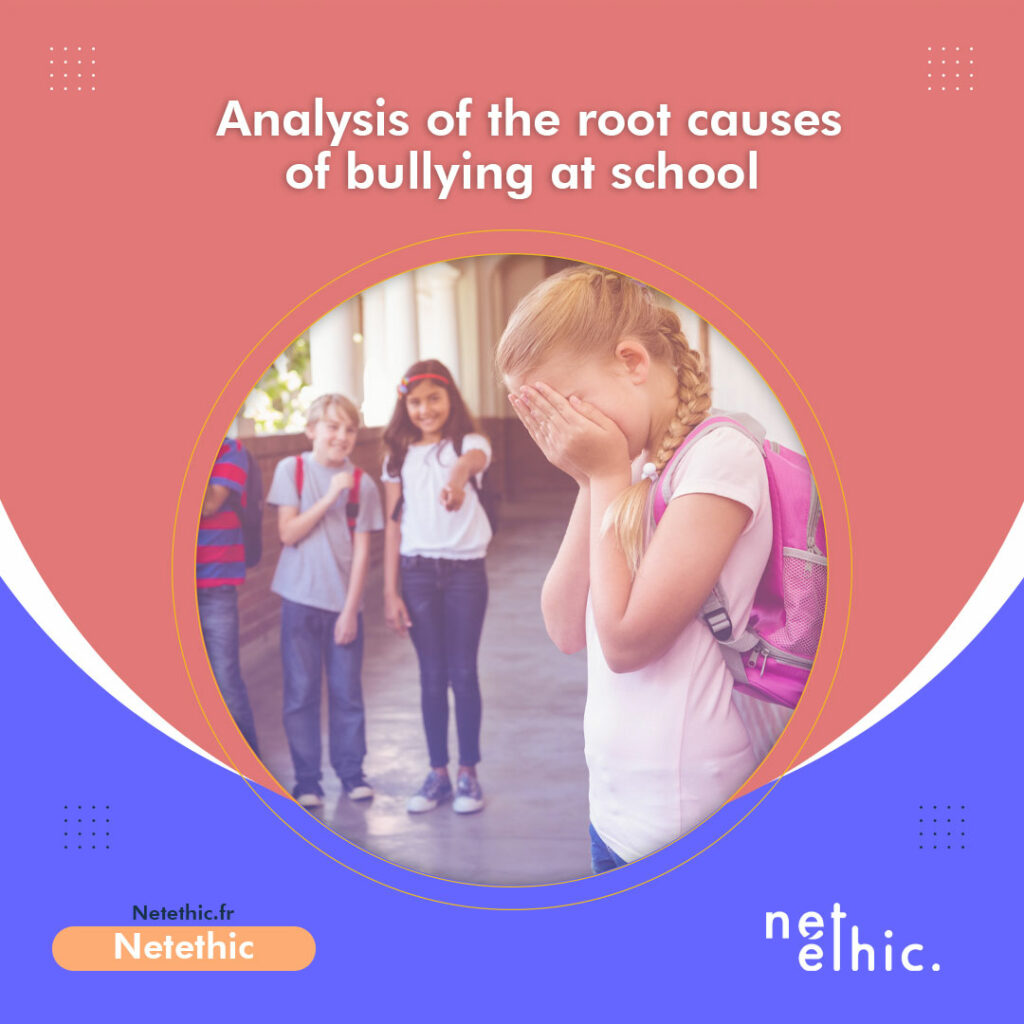Netéthic, une solution logicielle de lutte contre le harcèlement à l’école et en ligne
Analysis of the root causes of bullying at school
School bullying, unfortunately widespread in educational structures, constitutes a major challenge requiring a fine-tuned understanding of the phenomenon to effectively combat its deep roots. In this article, we explore the complex nuances of this phenomenon, focusing on the underlying causes on the perpetrator side, the serious repercussions for victims, and finally, holistic prevention strategies to eradicate this scourge from our schools.

The causes of bullying
The causes of bullying, on the part of the bully, are multiple and often interconnected. Each of these elements contributes to the creation of an environment conducive to the development of toxic and/or aggressive behavior. Here is a detailed analysis of these causes :
- Self-esteem problems :
Harassers may often suffer from self-esteem issues, feeling bad about themselves or seeking to compensate for their own insecurities by dominating and intimidating others. Harassment thus becomes a means of restoring a distorted perception of their own worth.
- Social inadequacy :
Some perpetrators may feel socially inadequate, unable to integrate harmoniously into their group. To regain a sense of control, they resort to harassment as a means of positioning themselves within the social hierarchy, establishing power based on fear.
- Undiagnosed behavioral disorders :
Undiagnosed behavioral disorders, such as frustration or poorly channeled anger, can be catalysts for bullying. If left untreated, these disorders can manifest themselves in aggressive behavior towards peers.
- Influence of family relationships :
Family relationships play a crucial role in shaping stalkers’ behavior. Negative authority patterns within the family can lead to a reproduction of these patterns in the school context. Similarly, a lack of emotional communication can encourage students to express their frustration through intimidating behavior.
The repercussions : Aggravating factors
School bullying, far from being an isolated phenomenon, finds additional dimensions in the aggravating factors that make some victims more vulnerable, which manifest themselves as follow :
- Social status differences :
Social status distinctions, whether based on physical appearance, ethnic origin or sexual orientation, become powerful catalysts for harassment. Students who stand out because of specific characteristics may be more susceptible to attack, creating oppressive hierarchies.
- Personal characteristics :
Shyness, sensitivity and other personal traits can unfortunately be perceived as vulnerabilities by stalkers. These predisposing characteristics can act as triggers, exacerbating stalking experiences for some victims. Understanding these particularities helps to tailor prevention approaches.
- Group dynamics :
Environments where power and manipulation are exercised by some individuals over others are conducive to harassment. Group dynamics, whether based on popularity, physical strength or other criteria, can create a culture where harassment is tolerated or even encouraged. Tackling these dynamics is essential to changing the social dynamics within schools.
Preventing bullying at school : Strategies to reduce risk for both perpetrators and victims
Preventing bullying requires a comprehensive, proactive approach. On the harassers’ side, educational programs focused on developing empathy, conflict resolution and emotional management can bring about positive behavioral changes. Early intervention and appropriate disciplinary measures are also essential to deter harassing behavior.
On the victim side, prevention means creating a safe and inclusive educational environment. Educational teams and parents must work hand in hand to promote tolerance, acceptance and respect for differences. Educating teachers and students about the seriousness of harassment and how to report it is equally crucial. By implementing these strategies, we can hope to reduce the incidence of bullying and create more caring educational communities.